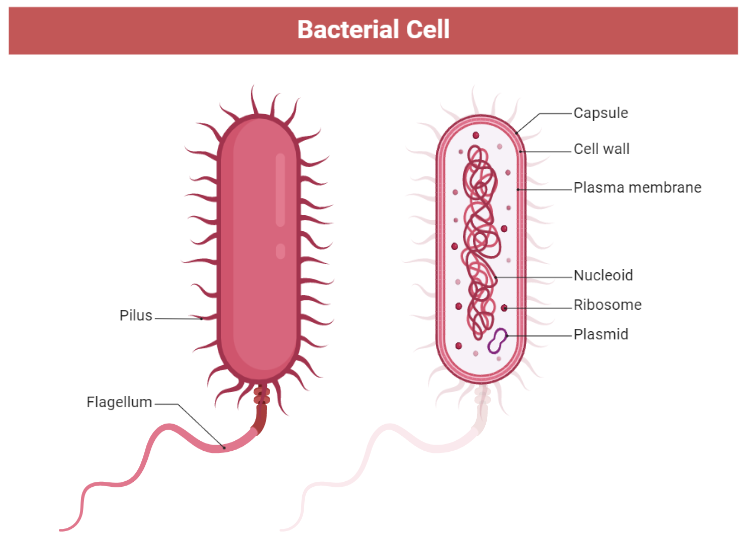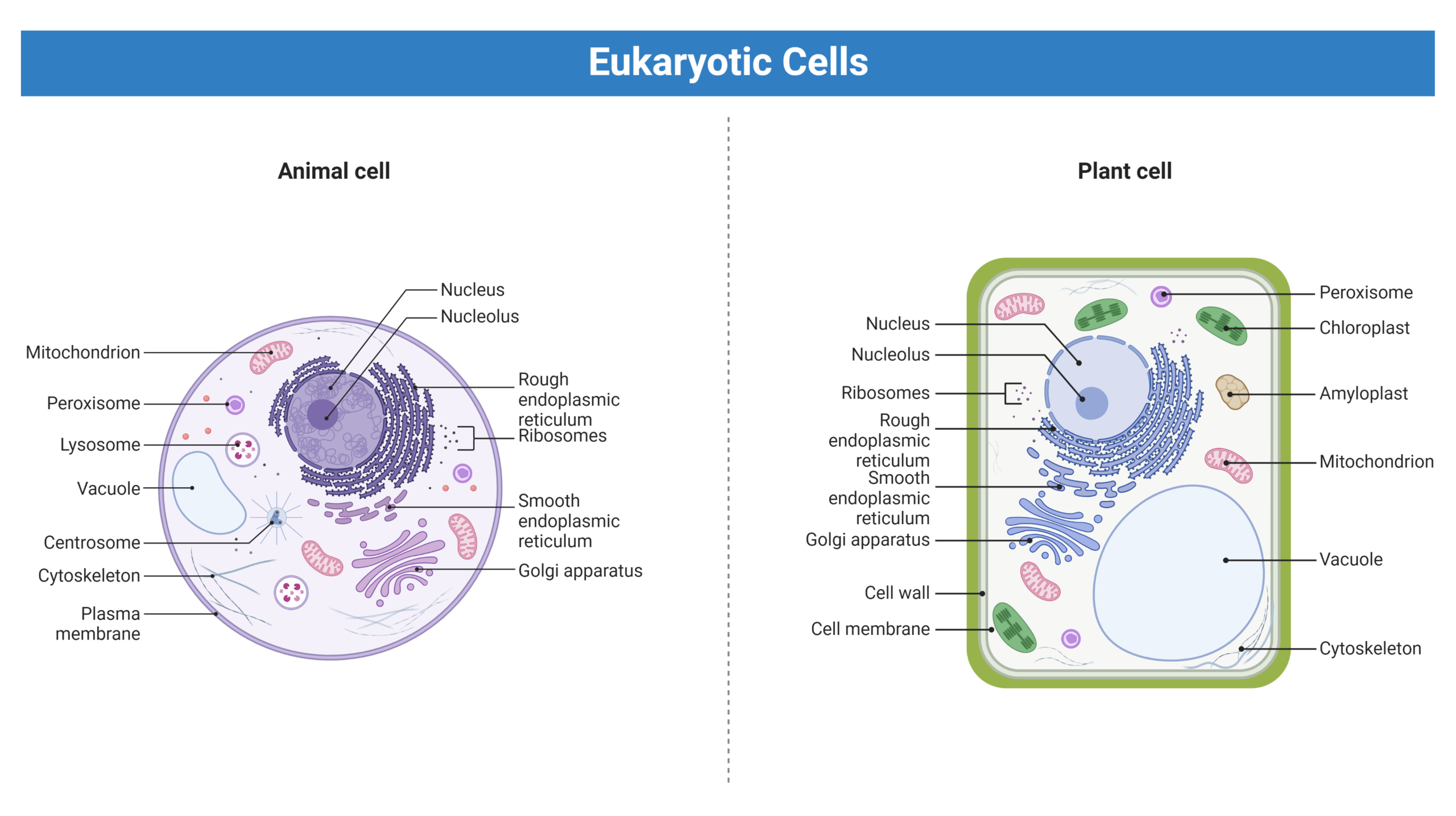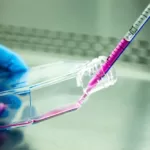What are prokaryotes?
Any organism classified as a prokaryote lacks a cell with a distinct (i.e., membrane bound) nucleus, as opposed to a eukaryote, which has a nucleus when we see under light microscope. The genetic material is located in the nucleoid area rather than the nucleus in prokaryotes.
Prokaryotes are typically small, single-celled organisms with a simple structure. Prokaryotic cells don’t have organelles that are attached to their membranes on the inside. Instead, they have a plasma membrane that surrounds them. Prokaryotes are microscopic organisms that are part of the two primary domains of life, Bacteria, and Archaea.
Characteristics of prokaryotes:
- Prokaryotes come in various shapes, including cocci, bacilli, spirilla, and vibrio.
- Prokaryotes typically have a size between 0.1 and 5.0 m, which is much smaller than eukaryotic cells.
- Prokaryotic cells lack a membrane-bound nucleus and other cell organelles, resulting in their primitive cellular arrangement.
- A single strand of DNA makes up the genetic material of prokaryotic cells in a single chromosome.
- Prokaryotic cells lack the essential histone protein, which is found bound in the chromosomes of eukaryotes.
- The nucleolus and the mitotic apparatus are absent from prokaryotic cells.
- Cell walls of prokaryotic cells are made of lipids and carbohydrates instead of cellulosic materials.
- Since prokaryotic cells are asexual, they can multiply without the formation of gametes.
- Prokaryotic cells are characterized by their protruding cell appendages, such as flagella, pili, and fimbriae.

What are eukaryotes?
Eukaryotes are organisms whose cells have a nucleus and other organelles encased in a plasma membrane. A range of internal processes, including protein synthesis and energy production, are carried out by different organelles.
The size range of eukaryotic cells is between 10 and 100 micrometers. There are some single-cell eukaryotes, even though most are multicellular organisms. Each membrane-bound structure performs a specific cellular function within a eukaryotic cell. All eukaryotes, including animals, plants, and fungi, are found in the third domain, Eukarya.
Characteristics of eukaryotic cells:
- The size of eukaryotes ranges from 10 to 100 m in diameter, making them substantially larger than bacterial cells.
- Eukaryotes have a wide range of shapes depending on the type of cell. While some cells have a fixed structure like plant cells, others are pleiomorphic like an amoeba. In addition to other functional adaptations, environmental influences have a significant impact on the morphology of the cells.
- The cellular arrangement of eukaryotic cells is more complex, with several membrane-bound organelles and a clearly defined nucleus.
- DNA is the linear genetic material found in eukaryotes and has several replication origins.
- Eukaryotic cells have a complex nuclear membrane covering their nucleus. Instead of the circular chromosomes found in prokaryotes, the chromosomes in the nucleus are complexed with the histone protein to create linear chromosomes.
- Some Eukaryotes have cell walls that are composed of cellulose or other carbohydrates.
- In contrast to other eukaryotic cells, yeast cells replicate asexually by mitosis or fission.

Prokaryotes Vs Eukaryotes
The difference between prokaryotes and eukaryotes are the following:
| Characteristics | Prokaryotes | Eukaryotes |
| Cell size | Prokaryotes typically have a diameter of o.2 to 2.0m. | Eukaryotic cells have a diameter of 1 to 100 m. |
| Cell Wall | Prokaryotes in general have a cell wall. The cell is surrounded by and protected by this strong framework, which helps it maintain its shape. Peptidoglycan makes up the cell wall of prokaryotes (Known as murein). | Animal cells in eukaryotes lack a cell wall, whereas plant cells do. Rather than peptidoglycan, cellulose makes up the majority of the plant cell wall. |
| Storage of DNA | Prokaryotes lack membrane-bound organelles, prokaryotes lack a nucleus and instead store their DNA in a section of the cell called the nucleoid. | The nucleoid is membrane-free, unlike the eukaryotic nucleus (which is encased in a nuclear envelope), and the DNA is therefore free to float in the cytoplasm. |
| Organelles | Variety of cell structures and organelles that are absent in prokaryotic cells. | Variety of cell structures and organelles that are present in eukaryotic cells. |
| Types of organisms | Bacteria and Archaea are the only two types of prokaryotic creatures that exist on earth. | Animals, Plants, Fungi, and protists are all eukaryotes, which are much more diverse |
| Reproduction | Prokaryotes divide via binary fission and reproduce asexually. The cell divides into two genetically identical daughter cells as a result of this process. | Multicellular eukaryotic species normally reproduce sexually, whereas single eukaryotic cells reproduce by mitosis and meiosis. |
| Ribosomes | The prokaryotic ribosome is the 70S and it is made up of 50S (large subunit) and 30S (small subunit). | The eukaryotic ribosome is the 80S and it consists of 60S (Large subunit) and 40S (small subunit). |
| Energy production site | In prokaryotic cells, the energy production site is the electron transport chain located in the cell membrane. | In eukaryotic cells, energy production occurs within membrane-bound mitochondria. |





